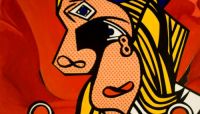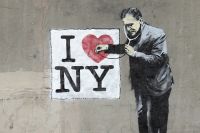The bright lines of the real property based view of copyright are being blurred by technology. In 1991, Mr. Biz Markee was found liable for infringing Mr. Gilbert O’Sullivan’s copyright in his song, Alone Again (Naturally), when Mr. Markee used an unauthorized sample in his rap song entitled Alone Again. Had Mr. Markee used Mr. O’Sullivan’s song in a mash up, the result may have been different.
A mash up is a digitally created song that splices in elements of other songs, sometimes in very small increments — not in quarks, but in milliseconds — to create what some would argue are original pieces. Think of a mash up as a fusion dish that blends elements of Chinese, southern soul food, Italian, and Mexican cuisine into one dish. The question arises whether the unauthorized use of other people’s songs in a mash up is an infringement or a fair use of their copyrighted works?
The question isn’t an academic one. According to Turning Profit from Music Mashups, New York based tech company Dubset Media, Inc., collects royalties from mash up artists who use other copyrighted songs in their works. The company’s technology, known as “MixScan,” tracks uses of copyrighted songs down to the second on mash ups. It then distributes royalties to labels depending on the extent of use.
These royalty streams come in different forms and can be lucrative, Turning Profit saying that such mini sampling can generate an additional $1.2 billion a year in revenues. That’s because there is a copyright in the musical composition underlying the song, and in the recording of the song. In Mr. O’Sullivan’s case, he would own the copyright to the composition of Alone Again (Naturally), which includes the musical notes and lyrics to the song, in addition to his recording of the song in the studio, known as the “master.” Mr. O’Sullivan collects royalties from those who wish to publicly perform or re-record his composition, and from others who wish to use the recording of the song in their music or in a film. Mr. Markee avoided paying these royalties to Mr. O’Sullivan by using the uncleared sample in the rap song Alone Again.
However, had Mr. Markee used Mr. O’Sullivan’s song in a mash up, the resulting decision finding infringement wouldn’t have been so easy. Mr. Markee would likely have had a colorable fair use defense if he: physically transformed the sample (changing the frequency, tone, bass) so that it became physically unrecognizable in the final product, sampled only a small part, and if the resulting rap song either had no effect on the market for Mr. O’Sullivan’s work, or exposed it further.
Courts are more prone to find fair use — and no infringement — when there is either physical transformation of the copyrighted work in a new work, or application to a new purpose. Patrick Cariou, a photographer, lost his copyright infringement lawsuit against appropriation artist Richard Prince because he had physically modified the photographer’s photos of Rastafarians — in one case, putting a gas mask and guitar in the Rastafarian’s hands. In the recent Google books case, Google was found to have fairly used authors’ copyrighted indexes to their books by making them searchable via Google books. This is so even though there was no physical transformation of the copyrighted work, but, rather, only application to a new purpose.
Before the recent technology boom, copyright infringement was viewed with a real property monocle — one toe over the line constitutes a trespass. But technology is making that toe harder to see and the resulting line between properties less clear. A rose by any other name may smell as sweet, but an Axl Rose sample in a mash up doesn’t smell as sweet.



